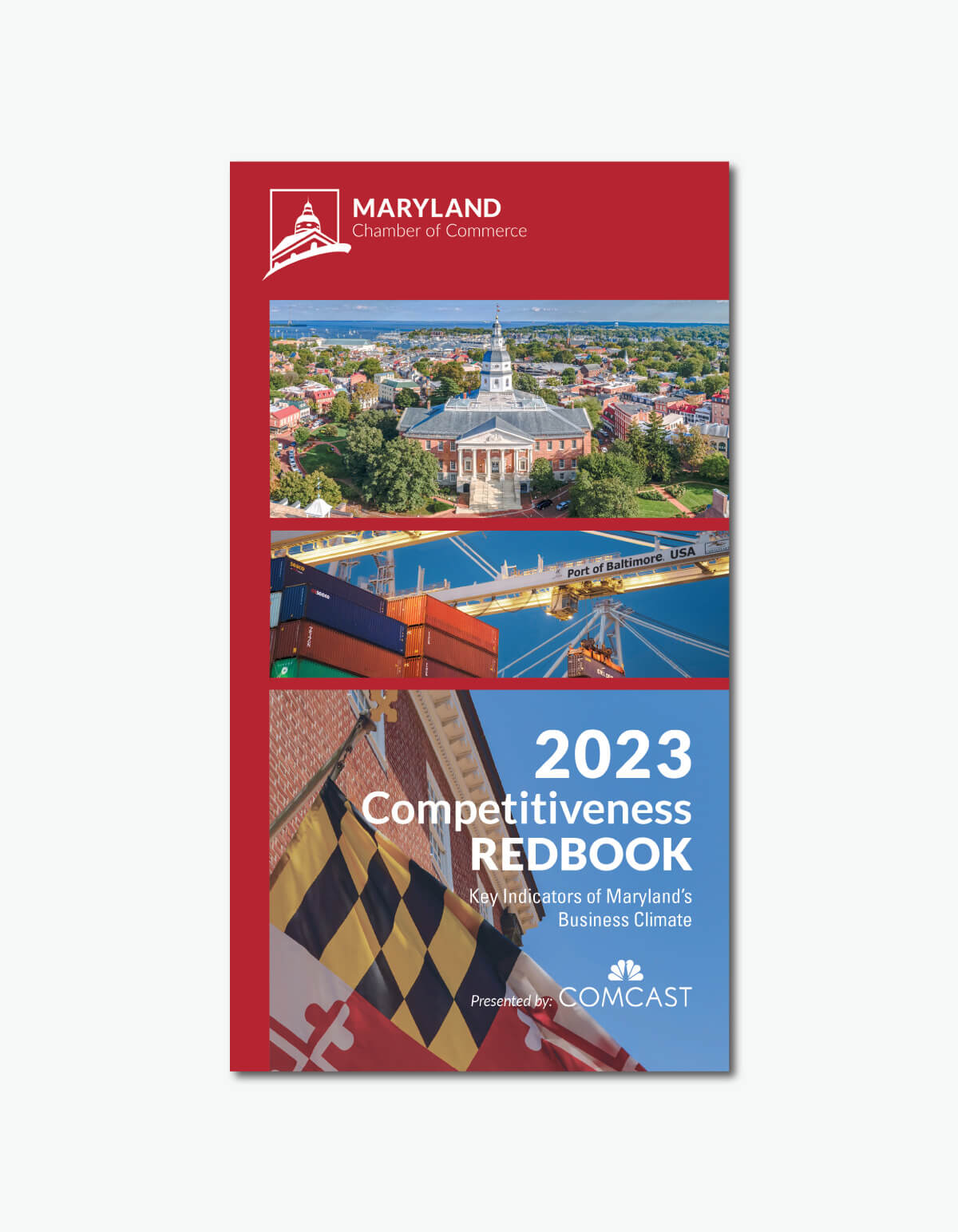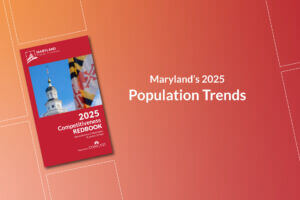Blog
Understanding Maryland’s Economic Competitiveness: Understanding Where Maryland Stands
Apr 4, 2023
The information provided below is based on data from our 2023 Competitiveness Redbook. Please check back soon for an updated analysis of our 2024 data.
Building a prosperous, competitive economy takes understanding of where we stand today.
No matter where you live, what you do, what industry you work in or what your political affiliation is, there’s one thing most everyone can agree upon: Building a prosperous, resilient state where people, communities and businesses can thrive is critical to making Maryland a great place to live, to raise a family and to own a business.
A state that is economically competitive creates prosperity and success all around by attracting business, investment, and a skilled, diverse workforce. In turn, the investments made lead to a growing economy, improved quality of life, and healthy, dynamic communities that people and businesses commit for the long term.
While most everyone can agree that advancing economic competitiveness is good for all, determining the strategies and steps to create a supportive environment for economic growth can be challenging.
A great place to start: understanding the conversation around where our state currently stands in regards to key economic indicators including employment growth, population change, wages, taxation, business friendliness, infrastructure investments, and economic, fiscal and regulatory freedom.
In an effort to start this important conversation, we’ve published the 2023 Competitiveness Redbook for Maryland. This data-driven snapshot provides a wealth of information, insights and opportunities that can benefit everyone by identifying areas of strength, weakness and opportunity and areas where we can make small and big strides to advance Maryland’s economic prosperity and competitiveness.
In addition, over the next several months, we’ll be sharing key insights from the competitiveness data, along with a look at the trends the data reveals and what it means for Maryland business leaders, industry and policymakers, starting with the below spotlight on Maryland’s business friendliness.
As you’ll see in the data, while there are areas of strength, our state and our businesses are struggling with issues including modest employment growth, lagging GDP and export growth, high rates of taxation, and burdensome economic, fiscal and regulatory policies that are making it difficult to attract and retain businesses, support growth, and ensure Marylanders have plentiful opportunities to secure great jobs.
We encourage you to use this data to understand the realities facing Maryland’s economy and business community. By working collaboratively to remove obstacles, update policies, and create a pro-business atmosphere where both businesses and communities thrive, we can make Maryland a top competitor for business with an economy that leaves no one behind.
Economic Indicator Spotlight: Maryland’s Business Friendliness
What the data shows:
Poor economic, regulatory and cost of business rankings indicate that Maryland has an unfavorable environment for business growth, retention and sustainability. Businesses are what drive our economy and what help communities thrive. We must advocate for and create a more favorable environment that attracts businesses and helps them be successful.
- Maryland ranked 27th overall in CNBC’s Top States for Business. While the state ranked fairly well for access to capital, tech & innovation, and quality of life, Maryland was ranked poorly for business friendliness (29th), economy (32nd), cost of doing business (44th) and cost of living (44th).
- In addition, Maryland’s economic, fiscal policy and regulatory freedom ranked 44th, 24th and 47th, respectively, among all states in 2021. The state’s rank for economic and regulatory freedom are concerning for our overall economy and business environment.
Stay tuned for upcoming spotlights and trends that the data reveals, including information on population and employment trends, minimum wage, taxation and more.
Data Sources
- Economic, Fiscal & Regulatory Freedom Data: Mercatus Center, George Mason University, 2021
- Top States for Business Data: CNBC Top States for Business Rankings, 2021
- Business Opening and Closing Rate Data: U.S. Bureau of Labor Statistics, Q1 2021-Q4 2024
Additional Reading
- Top States for Business: Maryland (CNBC, 2022)
- Best States for Business (Forbes)
- Best States for Economy (U.S. News)
- Examining latest movements in state economic growth and competition (Rich States, Poor States)
- Freedom in the 50 States, an Index of Personal and Economic Freedom (The Cato Institute)




A Turning Point for Maryland, and We’re Just Getting Started